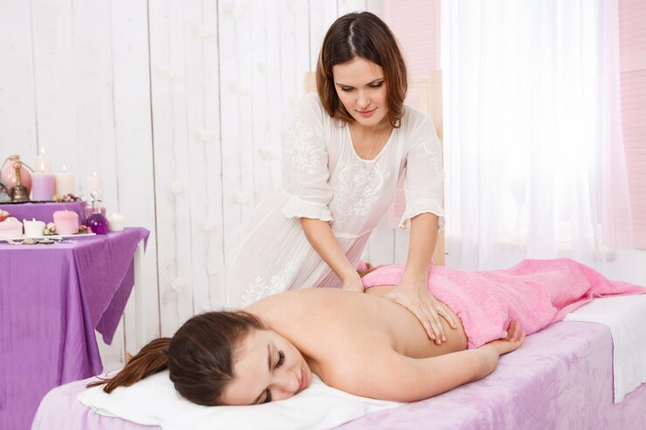Introduction
Pregnancy is an incredible journey that transforms a woman's body and mind, but it can also bring a range of physical and emotional challenges. From aching muscles and swollen joints to anxiety and stress, the various changes and discomforts experienced during pregnancy can significantly impact an expectant mother's well-being. Fortunately, there is a natural solution that can provide much-needed relief and support during this transformative time – prenatal massage.
What is Prenatal Massage?
Prenatal massage is a specialized form of massage therapy designed specifically for pregnant women. It aims to address the unique needs and concerns of expectant mothers, providing a safe and effective way to alleviate common pregnancy-related issues while promoting overall relaxation and well-being.
The Benefits of Prenatal Massage
1. Reduced Muscle and Joint Pain
Pregnancy can put a significant strain on a woman's body, leading to muscle tension, joint pain, and discomfort in various areas, such as the lower back, hips, and neck. Prenatal massage can help to alleviate these symptoms by improving blood circulation, reducing muscle tightness, and promoting relaxation.
2. Decreased Swelling and Edema
As the body undergoes dramatic changes during pregnancy, fluid retention and swelling (edema) can become a common problem, especially in the legs, feet, and hands. Prenatal massage can help to improve lymphatic drainage, reducing fluid buildup and minimizing swelling.
3. Enhanced Relaxation and Stress Relief
Pregnancy can be an emotionally and physically demanding time, leading to increased stress and anxiety. Prenatal massage has been shown to have a calming effect on both the mind and body, helping to reduce stress hormones, promote relaxation, and improve overall mood.
4. Improved Sleep Quality
Many pregnant women struggle with sleep disturbances, such as difficulty falling asleep, frequent waking, and restless nights. Prenatal massage can help to improve sleep quality by reducing physical discomforts and promoting a deeper state of relaxation.
5. Supportive for Postpartum Recovery
The benefits of prenatal massage can extend beyond the pregnancy period, as the relaxation and stress relief experienced during massage can also support the postpartum recovery process, helping new mothers to better cope with the demands of caring for a newborn.
Techniques and Considerations for Prenatal Massage
Positioning and Comfort
Prenatal massage typically involves the use of specialized cushions, pillows, and tables to ensure the expectant mother's comfort and safety. Techniques may include side-lying or semi-reclining positions, which allow the mother to rest comfortably without putting pressure on the abdomen.
Modalities and Pressure
Prenatal massage often utilizes gentle, soothing techniques, such as Swedish massage, light effleurage strokes, and targeted myofascial release. The pressure used is typically lighter than in a traditional massage, as the therapist must take into account the changes in the mother's body and the safety of the baby.
Contraindications and Precautions
While prenatal massage is generally considered safe, there are certain conditions and situations where caution is advised. These may include high-risk pregnancies, certain medical conditions, or specific stages of pregnancy. It is essential to consult with a qualified prenatal massage therapist who can assess the individual needs and provide appropriate, safe care.
Finding a Qualified Prenatal Massage Therapist
When seeking prenatal massage, it is crucial to work with a therapist who is specifically trained and experienced in this area. Look for providers who have received specialized education in prenatal massage, as well as current certifications and licenses. It is also important to ensure the therapist follows safety protocols and guidelines to protect the mother and baby.
The Prenatal Massage Experience
A typical prenatal massage session may last between 60 to 90 minutes, depending on the individual's needs and the therapist's recommendations. The session will typically begin with a consultation, where the therapist will discuss the mother's medical history, any specific concerns or areas of focus, and the overall goals for the massage.
During the massage, the therapist will use a variety of techniques and modalities to address the mother's needs, paying close attention to her comfort and safety. The session may include a combination of Swedish massage, myofascial release, and gentle stretching, among other techniques.
After the massage, the therapist may provide guidance on self-care, such as recommended stretches or exercises, as well as any follow-up recommendations or advice.
Incorporating Prenatal Massage into Your Pregnancy Journey
Prenatal massage can be a valuable addition to a comprehensive prenatal care plan, complementing other healthcare practices such as regular prenatal checkups, exercise, and nutritional guidance. Many expectant mothers find that incorporating prenatal massage into their routine can provide significant benefits throughout the various stages of pregnancy.
Conclusion
Prenatal massage is a powerful tool that can enhance the well-being of expecting mothers, offering relief from common pregnancy-related discomforts and promoting overall relaxation and comfort. By working with a qualified prenatal massage therapist, expectant mothers can explore the many benefits of this specialized form of bodywork and support their journey through this transformative time.





Comments